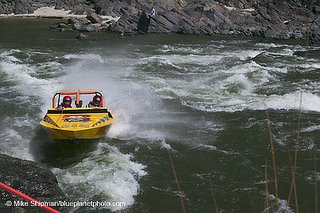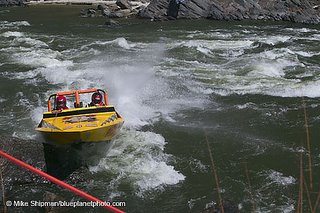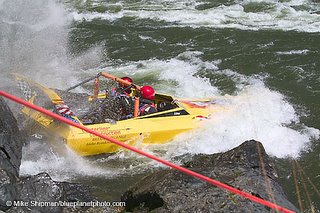Konica Minolta has announced it will cease all production of camera equipment. Press release below:
PRESS RELEASE
Konica Minolta Announces Withdrawal Plan for
Camera Business and Photo Business
Konica Minolta has long been a leading company in photo imaging business covering wide range of imaging from input to output. In addition, we have provided inspiring products and services by fusing our unique technologies.
In camera business, we have expanded picture-taking opportunities by developing innovative technologies such as the world’s first autofocus cameras. In 1962, our camera, well-accepted for its high reliability, boarded on the US’s first manned spaceship "Friendship 7."Also, ever since introduction of the world’s first body-integral autofocus SLR camera, Maxxum/Dynax series, in 1985, SLR cameras have become more popular among picture-takers, and we have succeeded in selling 16 million units of interchangeable lenses since then.
However, in today’s era of digital cameras, where image sensor technologies such as CCD is indispensable, it became difficult to timely provide competitive products even with our top optical, mechanical and electronics technologies.
In photo business, represented by the silver-halide photography such as color film and color paper, we have produced Japan’s first photographic paper in 1903, and Japan’s first color film in 1940, thus pioneering joy of photography for more than a century. In 1984, we introduced the world’s first compact washless photofinishing system known as a minilab system. The minilabs contributed to the expansion of worldwide photographic market by making photos closer to consumers and amazingly shortening delivery time.
However, traditional silver-halide photographic market is shrinking astonishingly by the surge of the worldwide digitization. In such a changing world, profits for camera and photo businesses worsened in recent years, and it became necessary to drastically reform business structure for the further growth of Konica Minolta. Ever since we decided and announced restructuring guidelines of our businesses on November 4, 2005, we have been considering practical and detailed plan, and we would like to announce our decision made today as follows:
1) Camera Business
In camera business, we have reached an agreement with Sony Corporation(Sony), having numerous image sensor technologies such as CCD and CMOS, to jointly develop digital SLR cameras in July 2005. In order to continue to have our customers use Maxxum/Dynax lenses, and to maximize possibilities of the optical, mechanical and electronics technologies accumulated through development of SLR cameras in the years to come, we came to the conclusion that it was best to transfer assets concerning camera business to Sony. Since then, we have been negotiating with Sony, and as a result, we have reached an agreement with Sony to transfer a portion of assets regarding digital SLR camera system to Sony--1. In this relation, we have decided to withdraw from camera business--2, such as film cameras and digital cameras, within Konica Minolta Group as of March 31, 2006.
Sony is planning to develop digital SLR cameras compatible with Maxxum/Dynax lens mount system, so that the current Maxxum/Dynax users will be able to continue to use them with Sony’s digital SLR cameras. In addition, we will consign camera service operations for Konica Minolta, Konica,Minolta brand cameras and related equipment to Sony.
--1
Pease refer to the news release, "Partial Transfer of Assets Related to Digital SLR Cameras ", separately announced today.
--2
Except for digital SLR cameras and interchangeable lenses produced for Sony.
2) Photo Business
In today’s shrinking photographic market represented by color film and color paper, we have been considering to scale back and to continue photo business at an appropriate size; however, when we foresee the photographic market, it is quite difficult to maintain profitability in this field, and we have decided to withdraw from photo business. As schemed below, we will, as much as possible, avoid causing any inconvenience in providing products to our worldwide customers in the course of withdrawal.
For color film and color paper, while considering our customer needs, we will step-by-step reduce product lineup and cease our color film and color paper production by the end of fiscal year ending March 31, 2007.
For minilab business, we will cease production of the system by the end of fiscal year ending March 31, 2006; however we will have such company as Noritsu Koki Co., Ltd to provide maintenance and customer services so as not to cause any inconvenience to our customers.
--1
Pease refer to the news release, "Consignment of Service and Maintenance Operations for Minilabs ", separately announced today.
In line with the above scheme, with consideration to our customers and regional situations, we will step-by-step reorganize our sales offices and withdraw from all of our photo sales activities by September 30, 2007.
3) Personnel Management
As a part of Konica Minolta Group’s restructuring, we will proceed with withdrawal plan for camera and photo businesses and aggressively shifted their management resources to other Konica Minolta Group companies. While continuing this effort, in order to rationalize a number of employees, we have decided to reduce worldwide Konica Minolta Group employees by 3,700 from the current 33,000 including early retirement offering by September 30, 2007--.
--
The early retirement offering is for Konica Minolta Group’s holding company, five business companies and two common function companies in Japan.
The expenses to be incurred with this restructuring are already included in the forecast for fiscal year ending March 31, 2006.
Konica Minolta Group will make our utmost efforts not to cause any inconvenience to our customer due to the decision we made this time. At the same time, camera and photo businesses are our traditional businesses ever since our founding, and we wish to express our heartfelt appreciation to the worldwide Konica Minolta fans for their patronage to our products for more than a century.
Konica Minolta Group is aiming to become more powerful corporate group by swiftly meeting market changes and pursuing "selection and concentration". We will, from now on, be concentrating our business resources on non-consumer businesses, such as the core "business technologies"field, the strategic "optics and display devices"field, and the growth expected "medical imaging"and "sensing"fields, increase competitiveness, and endeavor to further expand corporate value.
Outline of camera business
Main business: Manufacturing, sale, and related services of photographic equipment such as digital cameras, film cameras and lenses
Fiscal year ended March 31, 2005: Net sales: 117,000 million yen (Forecast for fiscal year ending March 31, 2006 is 75,000 million yen)
Operating Loss: 7,300 million yen
Outline of photo business
Main business: Manufacturing, sale, and related services of consumer and commercial photographic materials, inkjet media, and related equipment
Fiscal year ended March 31, 2005: Net sales: 151,500 million yen (Forecast for fiscal year ending March 31, 2006 is 110,000 million yen)
Operating Loss: 1,400 million yen




























